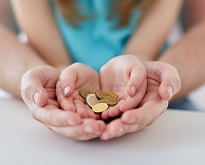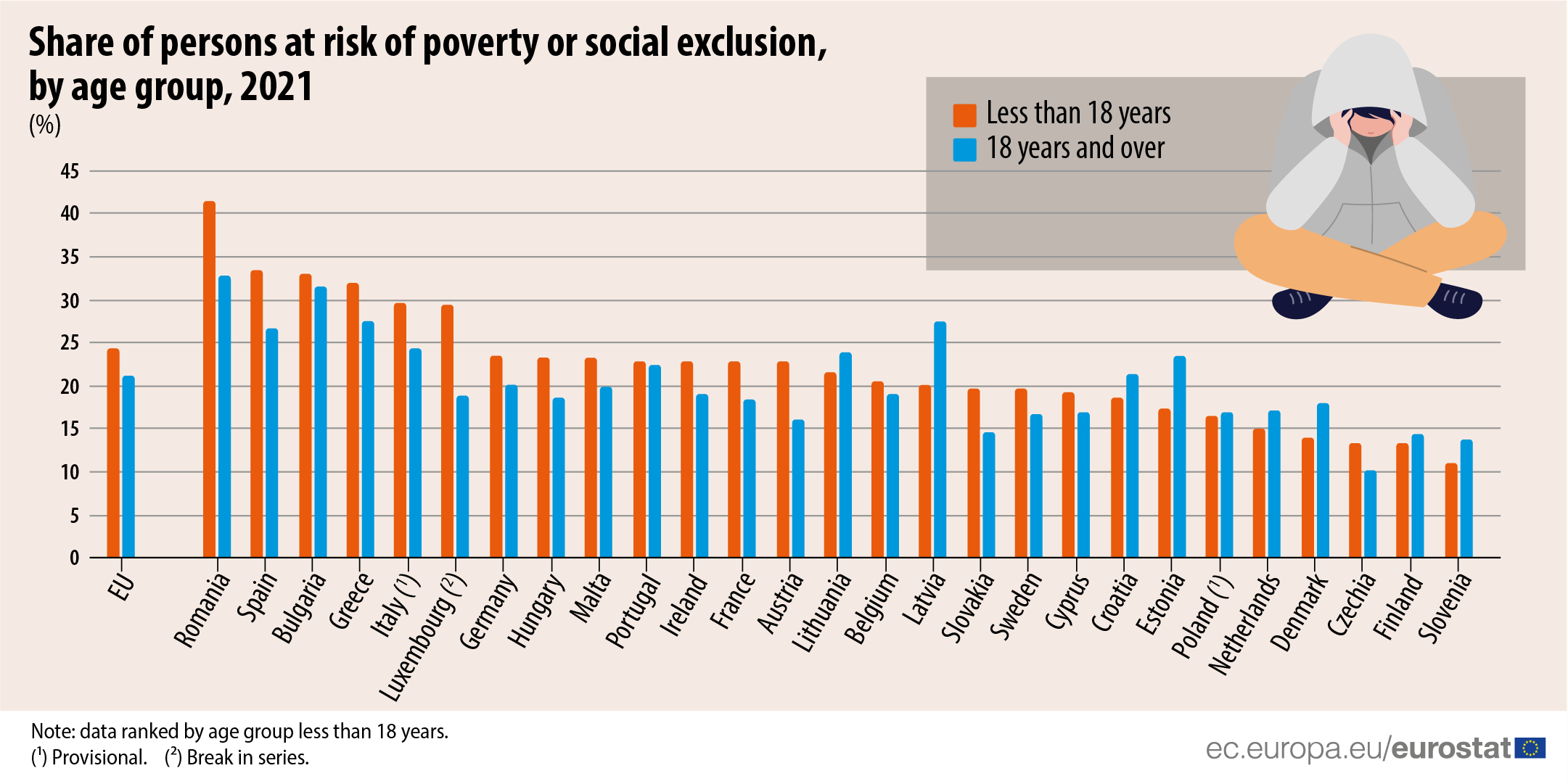Children who grow up in poverty or social exclusion encounter difficulties in doing well in school, enjoying good health and realising their full potential later in life. They also face a higher risk of becoming unemployed, poor and socially excluded as adults.
In 2021, 24.4% of children (aged less than 18 years old) in the EU were at risk of poverty or social exclusion compared with 21.1% of adults (aged 18 and over).
Among the EU Member States in 2021, the highest shares of children at risk of poverty or social exclusion were recorded in Romania (41.5%), Spain (33.4%) and Bulgaria (33.0%). On the other hand, the lowest shares were reported in Slovenia (11.0%), Finland (13.2%) and Czechia (13.3%).
Source dataset: ilc_peps01n
Children were at a higher risk of poverty or social exclusion compared with adults in 18 out of the 27 EU Member States. The largest gaps between the two age groups were recorded in Luxembourg (10.5 percentage points; pp), Romania (8.7 pp), Spain and Austria (both 6.8 pp).
On the contrary, adults were at a higher risk of poverty or social exclusion compared with children in 9 Member States (Latvia, Estonia, Denmark, Croatia, Slovenia, Lithuania, the Netherlands, Finland and Poland). The largest gaps between the two age groups among these 9 countries were observed in Latvia (7.4 pp), Estonia (6.0 pp) and Denmark (4.0 pp).
For more information:
- Statistics Explained article on children at risk of poverty or social exclusion
- Dedicated section on income and living conditions
- Database on income and living conditions
Methodological notes:
- The risk of poverty or social exclusion is not dependent strictly on a household’s level of income, as it may also reflect joblessness, low work intensity, working status, or a range of other socio-economic characteristics. To calculate the number or share of people who are at risk of poverty or social exclusion three separate measures are combined and this covers those persons who are in at least one of these three situations:
- persons who are at risk of poverty, in other words, with an equivalised disposable income that is below the at-risk-of-poverty threshold;
- persons who suffer from severe material and social deprivation, in other words, those who cannot afford at least seven out of thirteen deprivation items (six related to the individual and seven related to the household) that are considered by most people to be desirable or even necessary to lead an adequate quality of life;
- persons (aged less than 65 years) living in a household with very low work intensity, in other words, those living in households where adults worked equal to or less than 20 % of their total combined work-time potential during the previous twelve months.
- Italy and Poland: provisional data.
- Luxembourg: break in series.
To contact us, please visit our User Support page.
For press queries, please contact our Media Support.


